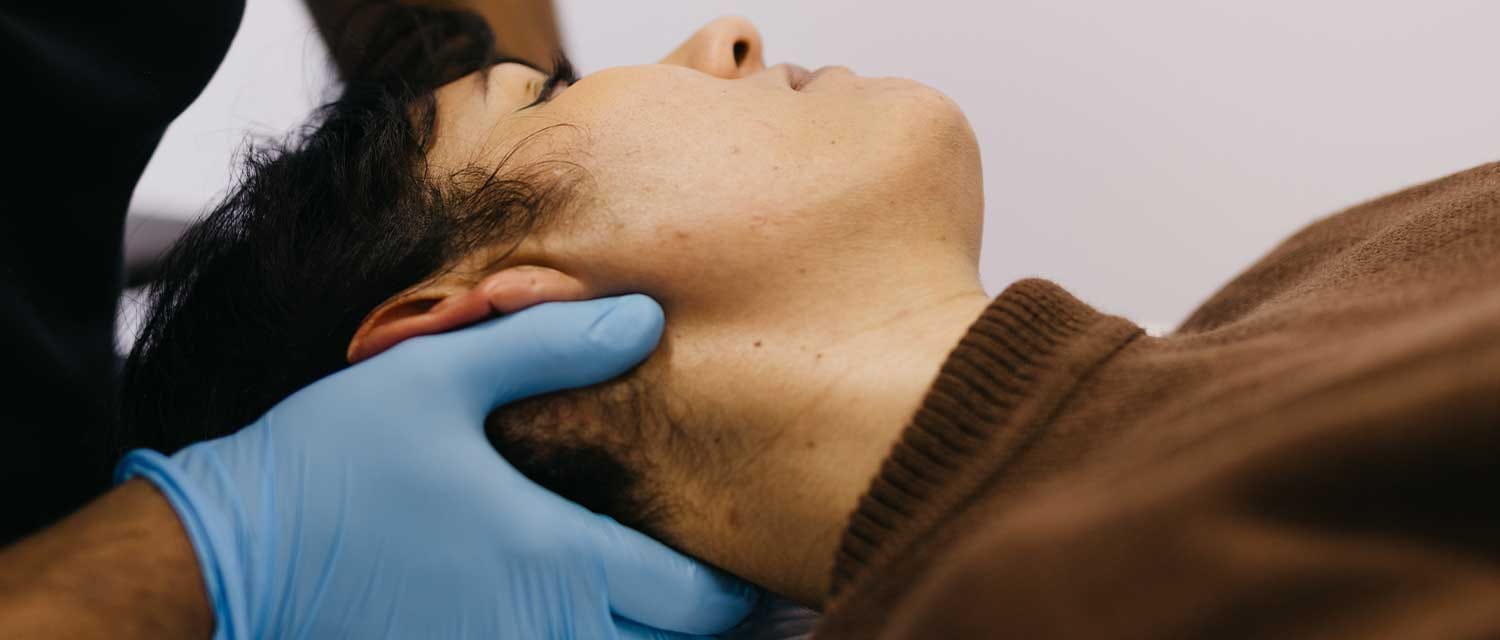Explore effective TMJ treatment options—including self-care, physical therapy, chiropractic care, and osteopathy—to relieve jaw pain and enhance your quality of life. Learn expert strategies and practical tips today.

Temporomandibular Joint (TMJ) disorders can be both painful and disruptive, affecting your ability to eat, speak, and even sleep comfortably. In today’s blog post, we will explore the question: Is there treatment for TMJ? We will discuss various treatment options under the umbrella term “TMJ treatment,” examine causes and symptoms, and provide guidance on conservative and advanced therapies. In addition, you will learn how specialised professionals such as chiropractors and osteopaths can be integral in managing TMJ disorders.
Throughout this article, we will use transition words to guide you smoothly from one section to another, ensuring the content is easy to follow and SEO-friendly. Our discussion is based on evidence and reputable sources like the NHS and Mayo Clinic, and guidelines outlined by the ASA, ensuring that the information is accurate and trustworthy. Before we dive in, please note that this blog is for informational purposes only and should not be taken as a substitute for professional medical advice.
The temporomandibular joint is the hinge connecting your jaw to your skull. It enables you to move your jaw up and down and side to side, facilitating essential functions such as chewing and talking. However, when something goes wrong with this joint, it can lead to a range of symptoms and discomfort.
TMJ disorder describes joint, muscle, and surrounding tissue problems. Although the exact causes remain under investigation, research suggests that TMJ disorders may be due to a combination of factors, such as injury, arthritis, or even stress-induced clenching and grinding of teeth.
For many people, the burning question is: Is there treatment for TMJ? The answer is yes. Multiple treatment avenues exist, from conservative home remedies to more specialised care provided by health professionals, including chiropractors and osteopaths.
Understanding the root causes of TMJ disorders is essential to choosing the right treatment strategy. Several factors might contribute to the onset of TMJ disorders:
TMJ disorders can manifest through various symptoms, including:
If you experience any of these symptoms, it is essential to seek a professional evaluation to determine the best course of treatment.

Diagnosis of TMJ disorders typically begins with a thorough medical history and physical examination. Your healthcare provider may also request imaging tests such as X-rays, CT scans, or MRIs to depict the joint’s structure clearly. Additionally, a detailed evaluation by a specialist—be it a dentist, chiropractor, or osteopath—can help pinpoint the precise cause of your symptoms.
The key here is early detection. Early intervention often leads to better outcomes and a more comfortable recovery. As you read on, you’ll discover that the treatment for TMJ can range from simple lifestyle changes to more advanced therapies.
TMJ can be treated using various strategies. Your treatment plan will depend on the severity of your symptoms, the underlying cause, and your overall health profile. In this section, we will explore both conservative and advanced treatment options.
Often, the first line of treatment for TMJ disorders is conservative care. Many patients experience significant relief through non-invasive methods:
These self-care strategies are simple yet effective. Many reputable sources, including the NHS and Mayo Clinic, recommend these approaches as initial measures before progressing to more specialised treatments.
When conservative treatments are insufficient, your healthcare provider may recommend physical therapy. A trained therapist can guide you through exercises to strengthen the jaw muscles and improve flexibility. Furthermore, behavioural therapy may also be suggested to help modify habits like teeth grinding and jaw clenching, which exacerbate TMJ issues.
In cases where pain is more severe, a doctor might prescribe medications. These can include:
It is essential to use these medications under the strict guidance of a healthcare professional.

As you explore TMJ treatment options, you might be surprised to learn that alternative therapies like chiropractic care and osteopathy are gaining attention. Both disciplines offer a holistic approach to managing TMJ disorders by addressing the root causes rather than merely alleviating symptoms.
Chiropractors are trained to diagnose and treat musculoskeletal issues, including those affecting the jaw. They use hands-on techniques to realign the body and reduce tension. For TMJ disorders, chiropractic adjustments can help improve the alignment of the spine and neck, which may relieve pressure on the TMJ. Furthermore, chiropractors often provide tailored exercise programs and ergonomic advice to support long-term recovery.
For instance, many patients report reduced pain and improved jaw mobility following regular chiropractic care. While chiropractic adjustments can be highly effective for some, they should always be part of a broader treatment plan developed in consultation with your primary healthcare provider.
Osteopaths take a similarly holistic approach. They focus on the relationship between the body’s structure and its overall function. An osteopath will assess the jaw and the entire musculoskeletal system to identify areas contributing to TMJ dysfunction.
Osteopathic treatments often involve gentle manipulation techniques to improve blood flow and reduce inflammation. By promoting balance in the body’s structure, osteopathic treatment can help alleviate TMJ pain while enhancing overall physical health. In many cases, osteopathy is used in conjunction with other treatments, such as physical therapy and medication, thereby providing a multi-faceted approach to managing TMJ disorders.
If conservative methods and alternative therapies like chiropractic care and osteopathy do not provide sufficient relief, advanced treatment options may be considered. These are typically reserved for severe cases where the joint is significantly damaged.
One standard advanced treatment involves the use of dental appliances. These devices, such as splints or mouth guards, are designed to prevent teeth grinding and to reduce the pressure on the TMJ. Customised by a dental professional, these appliances can be a very effective part of a comprehensive treatment plan.
Sometimes, corticosteroid injections into the joint can reduce inflammation and provide temporary relief. Although these injections are not a permanent solution, they can be a valuable part of a broader treatment strategy, especially for patients with severe pain.
Surgery is generally considered a last resort when other treatments have failed. For more complex cases, surgical options may include minimally invasive arthroscopy or open-joint surgery. While surgery carries inherent risks, for some patients, it can dramatically improve their quality of life. However, exhausting all other treatment avenues before considering a surgical intervention is crucial.
Given the multi-faceted nature of TMJ disorders, an integrated approach often yields the best results. Many patients find that combining self-care, physical therapy, chiropractic care, osteopathic treatment, and, in some cases, dental interventions offers the most comprehensive relief.
For example, you might start with conservative measures—such as dietary adjustments and stress management—and then incorporate physical therapy exercises. If pain persists, consulting a chiropractor or osteopath can offer additional insights. In severe cases, your doctor may recommend dental appliances or even injections.
The key is to develop a personalised treatment plan. Consultation with multiple specialists, including a general practitioner, dentist, chiropractor, and osteopath, can provide a well-rounded perspective on your condition. This integrated approach addresses the symptoms and works on underlying causes, leading to more sustainable long-term benefits.
It is expected to feel overwhelmed when confronted with chronic TMJ pain. However, remember that each step you take—adopting new self-care practices, consulting a specialist, or trying out physical therapy—brings you closer to relief. Transitioning from one treatment option to another should be a gradual and guided process, always in consultation with your healthcare provider.
Moreover, being proactive and well-informed about your treatment options can empower you to take charge of your health. The journey to managing TMJ disorders is not linear; it may require trial and error to find the right combination of therapies. Yet, with persistence and professional guidance, many patients experience significant improvements.
Absolutely. Many treatments exist—from self-care and physical therapy to chiropractic and osteopathic interventions. The appropriate treatment depends on the severity and underlying cause of your TMJ disorder.
Chiropractors focus on realigning the musculoskeletal system, potentially reducing pressure on the TMJ, while osteopaths employ gentle manipulation to improve overall body function and reduce inflammation. Both approaches emphasise a holistic perspective that can benefit TMJ patients.
If your symptoms worsen or if you experience severe pain, it is essential to consult with a healthcare professional immediately. Early intervention can prevent further complications and lead to better outcomes.
As with any medical treatment, there can be risks. For example, while medications and injections can relieve pain, they also have potential side effects. Similarly, advanced treatments like surgery carry inherent risks. Therefore, discussing options in detail with your healthcare provider to determine the best and safest approach for your condition is essential.
We encourage readers to consult several high-quality sources to ensure our discussion remains accurate and reliable. The NHS provides extensive information on TMJ disorders and treatment options, while reputable organisations such as the Mayo Clinic and Healthline offer additional insights. Furthermore, the guidelines provided by the ASA on health osteopathy underscore the importance of consulting qualified professionals when considering treatments like osteopathy.
For instance, the ASA’s advice on osteopathy emphasises that any osteopathic treatment should be undertaken only after thorough consultation with a trained and accredited practitioner. Similarly, leading medical websites stress that TMJ treatments should be tailored to the individual’s needs, taking into account the unique factors that contribute to their condition.
In summary, there is indeed treatment for TMJ disorders, and the options available today are both varied and comprehensive. Whether you are experiencing mild discomfort or severe jaw pain, a combination of conservative self-care measures, professional therapies such as physical therapy, chiropractic care, and osteopathy, and even advanced treatments like dental appliances or injections can pave the way toward recovery.
Remember, the journey to managing TMJ is highly individual. While one treatment may work wonders for one person, another might require a combination of strategies to achieve lasting relief. Working closely with your healthcare team to monitor progress and adjust your treatment plan as needed is crucial.
Moreover, incorporating input from chiropractors and osteopaths can provide additional avenues of relief. Their holistic approach not only targets the symptoms but also addresses the root causes of TMJ disorders. This integrated strategy is critical in today’s healthcare landscape, where a multi-disciplinary approach often yields the best outcomes.
Above all, stay informed and proactive. Regular consultations, a willingness to try new approaches, and a commitment to your overall well-being will serve you well on your journey to managing TMJ.
This article is intended for informational purposes only. It is not a substitute for professional medical advice, diagnosis, or treatment. Always seek the advice of your physician or other qualified health providers with any questions you may have regarding a medical condition. The content provided herein aligns with reputable health organisations and adheres to guidelines similar to those the ASA offers. Your health decisions should be made based on professional advice and your circumstances.
In conclusion, if you ask, “Is there treatment for TMJ?” the answer is a resounding yes. With a wide range of options available—from self-care and lifestyle adjustments to the specialised services of chiropractors and osteopaths—you can find a treatment plan tailored to your needs. Transitioning from one strategy to another under the guidance of a trusted healthcare professional can ultimately help restore your quality of life and ease the discomfort associated with TMJ disorders. Embrace a comprehensive approach, consult high-quality resources, and remember that every small step towards proper treatment is a step towards a pain-free future.
By staying informed and proactive, you can manage TMJ disorders effectively and enjoy a life free from chronic jaw pain.
For expert advice and in-depth insights, continue exploring our blog and refer to trusted resources such as the NHS, Mayo Clinic, and the ASA guidelines on health osteopathy.